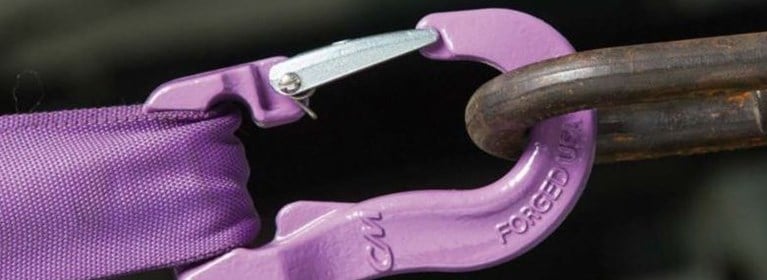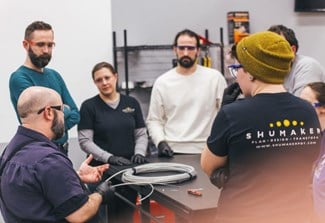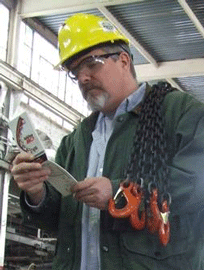
Rigging Safety 101: Seven Basic Safe Rigging Practices
Rigging | Safety and Training | By | Mar 30, 2010
Pre-planning your lift with everyone involved will ensure proper equipment and personnel are in place to make a safe lift.
Always use proper rigging techniques when lifting loads. Rigging training for your operators is important. Rigging handbooks and proper equipment should be readily available. If there is any doubt about the safety of your equipment or lift, stop the hoist, lower the load, and report the condition to your supervisor. Conduct all lifting operations so that no one will be injured in the event of equipment failure. Use proper hand signals and communication with all workers involved with the lift.
Listed below are some very basic safe rigging practices:
- When rigging, make sure the load hook and upper suspension form a straight line. The chain or body of the hoist should never come in contact with the load.
- Never tip-load hooks.
- Always use a sling or lifting device to rig around loads and use engineered lift points for attachment.
- Never work under suspended loads or lift loads over people.
- Never lift people with a hoist.
- When leaving the hoist unattended, land any attached loads.
- When the job is complete, place the hoist and hook in a location that will not interfere with the movement of people or materials.
When you are at the controls of a hoist, you have a lot of responsibility in your hands. By using safe rigging skills, good judgment, and common sense, you will help keep co-workers safe.
Columbus McKinnon Training
Articles authored by "Columbus McKinnon Training" were written by industry professionals with decades of unique and in-depth experience in the material handling industry who are no longer employed by Columbus McKinnon.




 North America - EN
North America - EN



